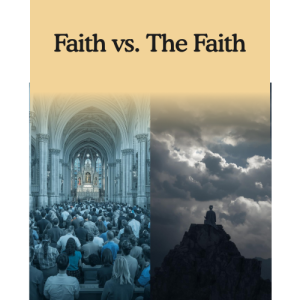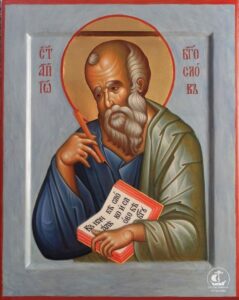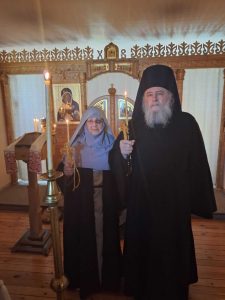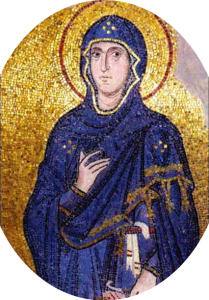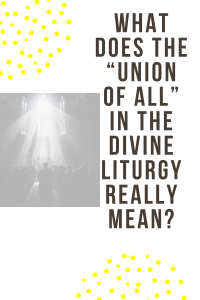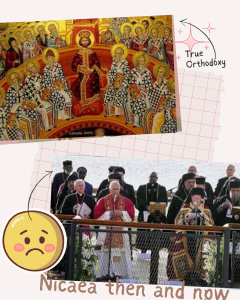THE RUSSIAN CHURCH AND THE NEW CALENDAR
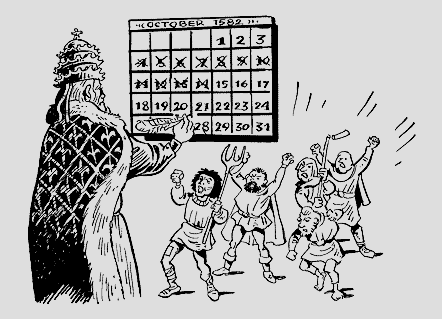
THE RUSSIAN CHURCH AND THE NEW CALENDAR
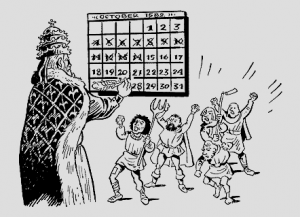
The calendar question is sometimes considered to have been a temptation only for the Greek-speaking Orthodox Churches. However, the Russian Church, too, had to struggle with it. And in view of the fact that several prominent hierarchs of the contemporary Moscow Patriarchate have expressed themselves in favour of the introduction of the new, Gregorian calendar, and that the MP has blessed its introduction in some of its parishes abroad (e.g. in England and Holland), it may be useful to review the history of this controversy in the 20th-century history of the Russian Church.[1]
Thinking “to change times and laws” (Daniel 7.25), a Decree of the Council of People’s Commissars dated January 24, 1918 ordered that the day after January 31, 1918 would be February 14 – not February 1. How did the Russian Church react to this order? By a remarkable coincidence, at the same time that the Soviet State introduced the new calendar, Patriarch Tikhon anathematized the State, calling on the faithful Orthodox to have no communion with “these outcasts of humanity” in any way whatsoever. A few days later the Patriarch’s anathema was confirmed by the Church Council then in session in Moscow. In view of this rejection of the legitimacy of the State, it is not surprising that the Church also rejected the State’s change of calendar.
Protopriest Alexander Lebedev writes: “The Sobor [Council] addressed the issue three days after the Decree was signed, at its 71st Session on January 27, 1918. The need for a prompt decision by the Church on how to relate to the civil calendar change was clear – the change was to take place four days later.
“It was decided to send the issue to a Joint Session of two separate Sections of the Sobor – the Section on Divine Services and the Section on the Relationship of the Church to the State.
“This Joint Session of the two Sections met two days later, on January 29, 1918, and heard two major reports, one by Professor S.S. Glagolev, entitled ‘A Comparative Evaluation of the Julian and Gregorian Styles’, and one by Prof. I.I. Sokolov, entitled, ‘The Attitude of the Orthodox East to the Question of the Reform of the Calendar’.
“Neither of these presentations in any way supported the introduction into Church life of the Gregorian Calendar – quite the contrary. Prof. Glagolev concluded, ‘The Gregorian Calendar, in addition to being historically harmful, is astronomically useless’… Professor Sokolov concluded: ‘Therefore, the controlling voice of the Orthodox East, both Greek and Slavic, is expressed as being not only against the Gregorian calendar, as a creature of the inimical to it [the Orthodox East] Catholic West, but also against a neutral or corrected calendar, because such a reform would deleteriously affect the ecclesiastical life of the Orthodox peoples.’
“Finally, the Joint Session of the two Sections prepared a Resolution on the issue of calendar reform.
“It decreed that the Church must stay with the Julian calendar, basing its decision on the following:
“1) There is no reason for the Church not to have a separate ecclesiastical calendar different from the civil calendar.
“2) The Church not only is able to preserve the Old Calendar, – at the present time it would be impossible for it to move to the new calendar.
“3) The introduction of the new calendar by the Russian Church would cause it to break unity with all of the other Orthodox Churches. Any change in the calendar can only be done by mutual agreement of all the Orthodox Churches.
“4) It is impossible to correlate the Orthodox Paschalion with the Gregorian Calendar without causing grave disruption to the Typicon.
“5) It is recognised that the Julian Calendar is astronomically inaccurate. This was noted already at the Council of Constantinople in 1583. However, it is incorrect to believe that the Gregorian Calendar is better suited for ecclesiastical use.
“In conclusion, the Joint Session resolved to maintain the Julian Calendar.
“The Council, in full session, approved this Resolution of the Joint Session.”[2]
In view of the Church’s determined opposition to the calendar change, the State did not impose its introduction for the time being. However, in 1922 the Bolsheviks succeeded in creating a schism within the Russian Church – the so-called “Living Church” or renovationist schism. Since the renovationists had been persuaded to introduce the new calendar, the Bolsheviks decided that it was a good moment to try and introduce it also into the True Church led by Patriarch Tikhon, especially since they now had Tikhon in prison pending trial.
The pressure on the Patriarch was indeed enormous. Every day he was visited by the GPU agent Tuchkov (Tikhon called him “an angel of Satan”), who made blackmail threats to force him to make concessions to the State. Being cut off from other true Christians, and able to glean information only from the Soviet newspapers, he came to the conclusion that the renovationist schism was increasing in strength. And then he heard that the “Pan-Orthodox Council” meeting in Constantinople under the presidency of the Freemason Patriarch Meletius Metaxakis had approved the introduction of the new calendar. He did not know until later that not only the Russian representatives, Archbishops Alexander and Anastasius, had rejected the Council, but also the other Eastern Patriarchs and Serbia.
The Council ended on June 10, 1923. On the next day, June 11, the Jew Yaroslavsky, president of the Antireligious Commission, wrote to the Politburo and Stalin: “It is necessary immediately to pass the following resolution on the case of Tikhon:… Tikhon must be informed that the penalty meted out to him may be commuted if: (a) he makes a special declaration that he repents of the crimes he has committed against Soviet power and the working and peasant masses and that he now has a loyal attitude to Soviet power; (b) he admits the justice of his being made to answer in court for these crimes; (c) he walls himself openly and firmly from all counter-revolutionary organisations, especially White Guard and Monarchist organisations, both civil and religious; (d) he expresses his sharply negative attitude to the new Karlovtsy Synod and its participants; (e) he expresses his negative attitude to the attacks by Catholic clergy (in the person of the Pope, also the Bishop of Canterbury and the Bishop of Constantinople Meletius); (f) he expresses his agreement with some reforms in the ecclesiastical sphere (for example, the new style).”
The new calendar and other ecclesiastical reforms were important to the Bolsheviks because, as Yaroslavsky explained, “his agreement with even one of these reforms (he has agreed to recognise the new, Gregorian calendar) will make him a ‘heretic’ – an innovator in the eyes of the True Orthodox.”[3]
Tikhon explained his decision to adopt the new calendar as follows: “This demand was repeated many times, and was reinforced by the promise of a more benevolent attitude on the part of the Government towards the Orthodox Church and Her institutions in the case of our agreement and the threat of a deterioration in these relations in the case of our refusal”.[4]
This is confirmed by the life of the future hieromartyr, Fr. Sergius Mechev. On hearing that Patriarch Tikhon had accepted the new calendar. Fr. Sergius was upset and came to him:
“Your Holiness Vladyka!” he said. “Don’t consider me a rebel, but my church conscience does not allow me to accept the new style!”
“What kind of a rebel are you, Seryozha!”, replied his Holiness in a fatherly way. “I know you. But they are demanding that I introduce the new style.”
On the whole the people of the Church did not accept the new style; but some considered that if the new style were adopted, believers would have greater opportunities to go to festal services, since at that time the Nativity and Baptism of Christ according to the new style were still holidays.
“I assure you,” said Fr. Sergius, “soon they will not keep the feast by any calendar.”
And soon the five-day-week became the six-day-week, then the seven-day-week or six days with a variable day of rest.
In July, 1923, the Patriarch was released from prison. On October 2/15, 1923 a “Little Council” of bishops decreed the introduction of the new style. However, when the Patriarch learned that the patriarchates of Alexandria and Jerusalem, as well as the Russian Church in Exile, were against the change, and when he saw that the Russian people were also strongly opposed to his decree, as they had been to the renovationists’ similar decree some months earlier, he reversed his decision.[5] In spite of this, agents of the government posted up notices of the now annulled decree on the introduction of the new calendar. But the people saw in this the clear interference of the State in the matter, and so no attention was paid to the decree.[6]
Only in one part of the Russian Church was the new calendar introduced – in Finland. In order to understand how this took place, we need to go back in time. In February, 1921, since Finland was now no longer part of the Russian State, Patriarch Tikhon granted the Finnish Church administrative autonomy within the Russian Church. However, on June 9, 1922, Patriarch Meletius of Constantinople uncanonically received this autonomous Finnish Church into his jurisdiction. The excuse given here was that Patriarch Tikhon was no longer free, and therefore, as Metropolitan Anthony (Khrapovitsky) put it, Meletius “could do as he pleased”. But in July, 1923 Patriarch Tikhon was released from prison. And so, on November 14/27, Patriarch Tikhon and the Russian Holy Synod, after listening to a report by Archbishop Seraphim of Finland, decreed that “since his Holiness Patriarch Tikhon has entered upon the administration of the Russian Orthodox Church, the reason for which the Patriarch of Constantinople considered it necessary temporarily to submit the Finnish Church to his jurisdiction has now fallen away, and the Finnish eparchy must return under the rule of the All-Russian Patriarch.”[7]
It was too late, however – Meletius was determined to keep the territory he had seized from the Russian Church (and not only in Finland, but also in Poland and the Baltic States). And already on September 3 he had moved to force the great Russian monastery of Valaam, which was now within the bounds of the Finnish State, to accept the new calendar. At a general assembly of the 600 brothers, as Nun Angelina (Zhavoronkova) writes, “Abbot Paulinus read out an epistle from Bishop Seraphim in which he said that both Patriarchs Meletius of Constantinople and Tikhon of Moscow blessed Valaam to change to the new style from October 4. Two days later Vladyka Seraphim arrived. He was met by the objections of the brotherhood and the request that they remain with the old style. This was refused to them, and less than two weeks later five of the protesting brothers were forcibly expelled from Valaam and deprived of the mantia.
“… On June 25, 1924 the new Bishop of Karelia visited Valaam. In November the Valaam monks presented him with a petition asking him to allow them to keep the celebration at any rate of Pascha according to the old style, but this, too, was refused them, and those who refused to obey the decrees of the Finnish Church were threatened with exile from Valaam.
“ Fr. Michael [Popov] was the spiritual father of the brotherhood at this exceptionally difficult time for Valaam. He encouraged everyone to remain faithful to the traditions of the Holy Orthodox Church. He often served in distant sketes and deserts and encouraged other Fathers to follow him. His nearest disciple and follower, Elder Michael the Younger, at that time Fr. Timon, was one of the most zealous defenders of the Orthodox calendar right until 1939, when the Valaam brotherhood was forced to leave their beloved monastery.
“Secret resistance increased especially in 1925. Fr. Michael sent his spiritual children by night with prosphoras to Gethsemane skete for Fr. Timon and they unfailing fulfilled their obedience, covering six kilometres every night. From the first days of the resistance the Gethsemane skete had become the place where people gathered for services according to the Old Church Calendar.
“On the question of the calendar, the Valaam monks entered into correspondence with the Athonite zealots of Holy Orthodoxy, the so-called zealots, the elders of Karoulia, especially the learned monk Theodosius, who even wrote a whole composition about the importance of the calendar question. On Valaam Hieromonk Justinian, the main correspondent in this correspondence, was a disciple of Elder Michael. While Elder Theodosius was the last spiritual disciple by correspondence with Elder Theophanes the Recluse.
“In the evening on the eve of the monastery’s feast day of SS. Sergius and Herman of Valaam, September 10, 1925, Metropolitan Germanus of Thyateira, the representative of the Patriarch of Constantinople, arrived [from London]. Having gathered together the brethren, he declared that the new calendar was being introduced from now. On September 16 the brotherhood sent to Sortavala their own representatives in the persons of Fr. Michael, Fr. Joasaph the deputy, Fr. Jerome and the other older priests of the monastery to talk with Metropolitan Germanus. With tears they besought him to keep the old style in the monastery. In reply the metropolitan irritably shouted at them. On September 20 Metropolitan Germanus accompanied by Bishop Germanus arrived on the island to celebrate the all-night vigil. Half of the brotherhood did not come to the service. He called the brotherhood to peace and love.
“Immediately after this repressions began. The antimins were taken from all the skete churches. Fr. Timon was transferred from the Gethsemane skete to the main monastery. A little later Hieromonk Polycarp was exiled to Russia to almost certain death in the concentration camps for his published articles against the leadership of the monastery.”[8]
“On September 25, 1925,” writes Schema-Monk Nicholas of Valaam, “there was a division of people in Valaam as to the ‘old’ and ‘new’ style. Many of the brothers remained true to the old style. Legal proceedings began. The church administration arrived; there was a court with Abbot Paulinus in charge. They began to summon the brothers one by one, and many were expelled from the monastery. Then my turn also came. I went into the room, and there sat Abbot Paulinus with others from the church administration. Father Abbot said, ‘Here is a slave of God; ask him.’ One of them said that he would speak and that everything should be recorded. They asked, ‘Do you accept Fr. Paulinus as Abbot?’ ‘Will you go to church services according to the new calendar?’ I could not answer this question; it was as if my tongue had become paralysed. They hesitated and said, ‘Well, why aren’t you answering?’ I couldn’t say anything. Then they said: ‘Well, go on, slave of God, and think this over.’
“I began to pray to the Mother of God, my ‘Surety’, in my heart. ‘Tell me and indicate my life’s path: Which side should I go to, the new or old style? Should I go to the cathedral or somewhere else?’ And I, the sinful one, prayed to the Mother of God during my obedience in the kitchen. When I finished my evening obedience, I went to my cell and thought in the simplicity of my heart, ‘Why don’t you answer me, Mother of God?’ But the grace of God did not abandon me, a sinner. He wants salvation for all. Suddenly the cathedral appeared before me, the same as it is: the same height, length and width. I was amazed at this miraculous apparition – how could it enter my small cell? But my inner voice said to me: ‘Everything is possible with God. There is nothing impossible for Him.’ ‘Well,’ I thought, ‘one must go to church in the cathedral according to the new style.’ Then, as I was thinking thus, a blue curtain came down from above, in the middle of which was a golden cross. The cathedral became invisible to me, and the inner voice said to me: ‘Go to the old style and hold to it.’ And I heard a woman’s voice coming from above the corner: ‘If you want to be saved, hold fast to the traditions of the Holy Apostles and the Holy Fathers.’ And then the same thing was repeated a second time, and the third time the voice said: ‘If you want to be saved, keep fast to the tradition of the Holy Apostles and Holy Fathers, but not these “wise” men.’ After this miracle, everything disappeared and I remained alone in my cell. My heart began to rejoice that the Lord had indicated the path of salvation to me, according to the prayers of the Mother of God.”[9]
“On September 12, 1926,” continues Nun Angelina, “the former cathedral elders of Valaam, who had remained faithful to patristic Orthodoxy, were summoned to a new trial in Serdobol. The trial was pro forma, and 35 monks were condemned to exile, while the abbot was to deal with the rest, dispersing them among all the sketes.
“On October 9 the sentence was carried out. One of those exiled from Valaam, Hieromonk Nicander, the former spiritual father of the famed Lesna monastery, remembers:
“’We shall never forget that… sad day… Our own Abbot Paulinus and our own monastic brothers handed us over to the police… For the sake of temporary comfort, out of fear of men, they drowned out the voice of their conscience and transgressed the holy canons of the Church… The day of our exile that autumn was exceptionally quiet, Lake Ladoga was calm and the first powdery snow covered Valaam… By eight o’clock in the morning we had all gathered on the ferry… the Old Calendarist monks who remained, together with some unwilling new calendarists, came to say goodbye to us; not a few tears were shed on both sides. (Even the gendarme wept, remembered Fr. Philemon.)… How bitter it was for us to leave our native nest, but our souls were at peace, for we felt that we were suffering for the sake of righteousness and that God was with us.’
“On November 15 an Investigative Commission arrived at the monastery, and in the course of four days interrogated each of the brothers on their own, asking whether they recognised Bishop Germanus and whether they would serve with him. Fr. Michael was defrocked by a church court, removed from his obedience as Spiritual Father and exiled on December 15 to the distant St. Herman skete. (According to the words of Fr. Athanasius, who left memoirs of his elder, Fr. Michael was first exiled to Tikhvin island.) Thence he was transferred to the Skete of St. John the Forerunner in 1926, where he spent the following eight years [until his death on May 8, 1934], suffering from a weakness of the heart in the severe conditions of the strictest skete on Valaam. In that year 44 of the brothers were exiled and 48 left Valaam…”[10]
In 1939, when the Soviets captured Old Valaam, and many of the monks fled to New Valamo in Finland, the spiritual life of the great monastery came to an end. However, in the early 1980s a True Orthodox Christian visiting New Valamo came back with the news that there were still two Old Calendar monks there – an Igumen Symphorian, who died shortly after, and another monk over 100 years old. They had their own quarters and refused any contact with the new calendarists or visiting Soviet hierarchs.
Something should be said about this Bishop Germanus who introduced the new calendar into Valaam. He had been consecrated as a vicar bishop for Finland by the Ecumenical Patriarch Gregory IV, although he, the priest Aava, “was not only not tonsured”, as Metropolitan Anthony (Khrapovitsky) writes, “but not even a rasophore. Moreover, this was done not only without the agreement of the Archbishop of Finland, but in spite of his protest. By these actions the late Patriarch of Constantinople violated a fundamental canon of the Church – the sixth canon of the First Ecumenical Council [and many others], which states, ‘If anyone is consecrated bishop without the consent of his metropolitan, the Great Council declares him not to be a bishop.’ According to the twenty-eighth canon of the Fourth Ecumenical Council, the patriarch cannot even place a bishop in his diocese without the approval of the local metropolitan. Based on precisely this same canon, the predecessors of Gregory vainly attempted to realize his pretensions and legalize their claims to control. This uncanonical ‘bishop’ Aava, once consecrated as bishop, placed a monastic klobuk on his own head, and thus costumed, he appeared in the foreign diocese of Finland. There he instigated the Lutheran government to persecute the canonical Archbishop of Finland, Seraphim, who was respected by the people. The Finnish government previously had requested the Ecumenical Patriarch to confirm the most illegal of laws, namely that the secular government of Finland would have the right to retire the Archbishop. The government in fact followed through with the retirement, falsely claiming that Archbishop Seraphim had not learned enough Finnish in the allotted time. Heaven and earth were horrified at this illegal, tyrannical act of a non-Orthodox government. Even more horrifying was that an Orthodox patriarch had consented to such chicanery. To the scandal of the Orthodox and the evil delight of the heterodox, the highly dubious Bishop Germanus (the former Fr. Aava) strolled the streets of Finland in secular clothes, clean-shaven and hair cut short, while the most worthy of bishops, Seraphim, crudely betrayed by his false brother, languished in exile for the remainder of his life in a tiny hut of a monastery on a stormy isle on Lake Ladoga.”[11]
*
After the Patriarch recovered from his mistake, he and the Russian Church as a whole set themselves firmly against the new calendar. In 1924 Metropolitan Anthony (Khrapovitsky) of Kiev, the second hierarch in rank after the Patriarch and President of the Synod of Bishops of the Russian Church Abroad, set off on a seven-month trip to the East to muster support against the renovationist reforms among his friends from before the revolution – Patriarchs Photius of Alexandria, Gregory of Antioch and Damian of Jerusalem. He also visited Mount Athos in spite of the opposition of the Patriarch of Constantinople.
The three Eastern patriarchs, together with Patriarch Demetrius of Serbia, spoke out strongly against the new calendar and the other reforms introduced by Constantinople, and Metropolitan Anthony entertained hopes that even the patriarch of Constantinople would reverse course. Thus in a letter to Gregory’s successor, Constantine VI, dated February 4/17, 1925, he both defended Patriarch Tikhon and compared Meletius and Gregory to the heretical patriarchs of Constantinople condemned by the Seven Ecumenical Councils: “It is on this same path of disobedience to the Holy Church and the canons that the two last predecessors of your Holiness descended.”[12]
Unfortunately, however, Metropolian Anthony did not take the decisive and canonically correct course adopted by the Greek and Romanian Old Calendarists of breaking communion with the renovationists. In 1925 he even took part, with the patriarch of Constantinople, in the enthronement of the new calendarist Freemason Miron as patriarch of Romania. So it is not surprising that his actions were ultimately unsuccessful: the patriarch of Constantinople never abandoned the new calendar, and the Churches of Alexandria and Antioch both in time accepted it.
What was the attitude of the Russian Orthodox Church Abroad (ROCA) to the Greek Old Calendarists? As we have seen, the Russian Church in all its jurisdictions retained the Old Calendar, and in outlying parts of the former Russian empire which came under the power of new calendarists, such as Valaam and Bessarabia, Russians offered strong resistance to the innovation. The ROCA condemned it, and in 1930 Metropolitan Anastasy concelebrated with the leading Romanian Old Calendarist, Hieromonk Glycerius.
However, the first-hierarch of the ROCA, Metropolitan Anthony (Khrapovitsky), adopted a more ambiguous position. In 1926, writing to the Russian Athonite Hieroschemamonk Theodosius of Karoulia[13], he refused to break communion with the new calendarists of the Constantinopolitan and Greek Churches: “You know the 13th, 14th and 15th canons of the First-and-Second Council, which speaks about separating oneself from a Bishop or Patriarch after his conciliar condemnation. And then there is the canon (the 15th), which says that that clergyman is worthy, not of condemnation, but of praise, who breaks with links with him [the heretic] for the sake of a heresy condemned by the holy councils or fathers…, and besides ‘when he (that is, the first-hierarch) preaches heresy publicly and teaches it openly in the Church’. But this, glory to God, neither P[atriarch] Basil [III of Constantinople] nor [Archbishop] Chrysostom [of Athens] have done yet. On the contrary, they insist on keeping the former Paschalion, for only it, and not the Julian calendar itself was covered by the curse of the councils. True, P[atriarch] Jeremiah in the 15th [correct: 16th] century and his successor in the 18th anathematised the calendar itself, but this curse: 1) touches only his contemporaries and 2) does not extend to those who are frightened to break communion with him, to which are subjected only those who transgress the canonical Paschalion. Moreover (this needs to be noted in any case), the main idea behind the day of Pascha is that it should be celebrated by all the Christians (that is, the Orthodox) on one and the same day throughout the inhabited world. True, I myself and my brothers do not at all sympathise with the new calendar and modernism, but we beseech the Athonite fathers not to be hasty in composing letters (Romans 14). – Do not grieve about our readiness to go to the C[onstantinople] Council. Of course, there will be no council, but if there is, and if we go, as St. Flavian went to the robber cou[ncil], then, of course, we will keep the faith and deliver the apostates to anathema. But as long as the last word has not been spoken, as long as the whole Church has not repeated the curses of Patriarch Jeremiah at an ecumenical council, we must retain communion, so that we ourselves should not be deprived of salvation, and, in aiming at a gnat, swallow a camel…”[14]
In another letter he admitted that akriveia was on Fr. Theodosius’ side, but argued in favour of oikonomia: “It is in vain that you torment your conscience with doubts about continuing to be in communion with the Constantinopolitan Patriarchate. Present this matter to the judgement of the hierarchs, and until it has taken place remain in communion…”[15]
However, the wording of the 16th century Councils that anathematised the new calendar does not support the metropolitan’s interpretation that it applied only to the new paschalion: “Whoever does not follow the customs of the Church,… but wishes to follow the Gregorian Paschalion and Menaion [calendar],… let him be anathema.” Moreover, there is no word about the anathema applying only to the generation of the anathematisers. In general, anathemas, as expressing the unchanging decision of God with regard to something that is eternally false, are necessarily applicable, if valid and canonical, in all places and at all times.
In the same year of 1926, a different opinion to that of Metropolitan Anthony, and one closer to the conciliar consciousness of the Orthodox Church, was expressed by the second member of the ROCA Synod, Archbishop Theophanes of Poltava and Pereyaslavl:
“Question. Have the pastors of the Orthodox Church not made special judgements concerning the calendar?
“Answer. They have, many times – with regard to the introduction of the new Roman calendar – both in private assemblies and in councils.
“A proof of this is the following. First of all, the Ecumenical Patriarch Jeremiah II, who lived at the same time as the Roman calendar reform, immediately, in 1582, together with his Synod condemned the new Roman system of chronology as being not in agreement with the Tradition of the Church. In the next year (1583), with the participation of Patriarchs Sylvester of Alexandria and Sophronius VI of Jerusalem, he convened a Church Council. This Council recognised the Gregorian calendar to be not in agreement with the canons of the Universal Church and with the decree of the First Ecumenical Council on the method of calculating the day of Holy Pascha.
“Through the labours of this Council there appeared: a Conciliar tome, which denounced the wrongness and unacceptability for the Orthodox Church of the Roman calendar, and a canonical conciliar Decree – the Sigillion of November 20, 1583. In this Sigillion all three of the above-mentioned Patriarchs with their Synods called on the Orthodox firmly and unbendingly, even to the shedding of their blood, to hold the Orthodox Menaion and Julian Paschalion, threatening the transgressors of this with anathema, cutting them off from the Church of Christ and the gathering of the faithful…
“In the course of the following three centuries: the 17th, 18th and 19th, a whole series of Ecumenical Patriarchs decisively expressed themselves against the Gregorian calendar and, evaluating it in the spirit of the conciliar decree of Patriarch Jeremiah II, counselled the Orthodox to avoid it…
“Question. Is the introduction of the new calendar important or of little importance?
“Answer. Very important, especially in connection with the Paschalion, and it is an extreme disorder and ecclesiastical schism, which draws people away from communion and unity with the whole Church of Christ, deprives them of the grace of the Holy Spirit, shakes the dogma of the unity of the Church, and, like Arius, tears the seamless robe of Christ, that is, everywhere divides the Orthodox, depriving them of oneness of mind; breaks the bond with Ecclesiastical Holy Tradition and makes them fall under conciliar condemnation for despising Tradition…
“Question. How must the Orthodox relate to the new calendarist schismatics, according to the canons?
“Answer. They must have no communion in prayer with them, even before their conciliar condemnation…
“Question. What punishment is fitting, according to the Church canons, for those who pray with the new calendarist schismatics?
“Answer. The same condemnation with them…”[16]
September 26/ October 9, 2003.
[1] The beginning of the modern interest of the MP in adopting the new calendar may be dated to the late 1960s. Archimandrite (now Bishop) Sergios writes: “In 1971 Metropolitan Nikodim of Leningrad visited Alaska in order to venerate the relics of St. Herman. In an effort to distance itself from the MP, the then-new OCA had not invited the MP hierarchs to participate in the August, 1970 canonization of that Saint. Metropolitan Nikodim (and his OCA guide, Father Kyril Fotiev) spent 5 days in Sitka en route to Kodiak and I was the local host. During several long conversations, Metropolitan Nikodim mentioned that he was intent on adopting the civil calendar for the MP, and as a test case, had brought about Bulgaria’s switch from the patristic to the civil calendar [in 1968].” (personal communication, 15 February, 2004)
[2] Lebedev, “St. Patriarch Tikhon and the Calendar Question Part 1”, orthodox@LISTSERV.INDIANA.EDU, 10 July, 2002.
[3] N.N. Pokrovsky, S.G. Petrov, Arkhivy Kremlia: Politburo i Tserkov’ 1922-1925gg., Moscow: Rosspen, 1997, vol. 1, pp. 282-284.
[4] M.E. Gubonin, Akty Sviateishago Patriarkha Tikhona, Moscow, 1994, pp. 299-300, 335.
[5] Ibid., pp. 300, 335
[6] Ibid., pp. 335-38.
[7] Ibid., p. 304.
[8] Nun Angelina, “Starets Mikhail Starshij, ispovednik strazhduschego pravoslavia”, Russkij Palomnik, N 17, 1998, p. 64.
[9] The Orthodox Word, nos. 160-161, September-December, 1991, pp. 268-270.
[10] Nun Angelina, op. cit., pp. 64-66.
[11] See Monk Gorazd, “Quo Vadis, Konstantinopol’skaia Patriarkhia?”, Pravoslavnaia Rus’, no. 2 (1455), January 15/28, 1992, p. 9.
[12] Archbishop Nikon (Rklitsky), Zhizneopisanie Blazhenneishago Mitropolita Antonia, 1960, vol. VI, p. 164.
[13] See “Starets Feodosij Karul’skij Svyatogorets”, Russkij Palomnik, 23, 2001, pp. 15-43.
[14] Pis’ma Blazhennejshago Mitropolita Antonia (Khrapovitskago), Jordanville, 1988, p. 195.
[15] Pis’ma Blazhennejshago Mitropolita Antonia (Khrapovitskago), op. cit., p. 197. But Fr. Theodosius, rightly, remained in communion with the Athonite zealots and not with the new calendarist innovators…
[16] Archbishop Theophanes, Kratkie kanonicheskie suzhdenia o letoschislenii, in V.K., Russkaia Zarubezhnaia Tserkov’ na Steziakh Otstupnichestva, St. Petersburg, 1999, pp. 29-30.

